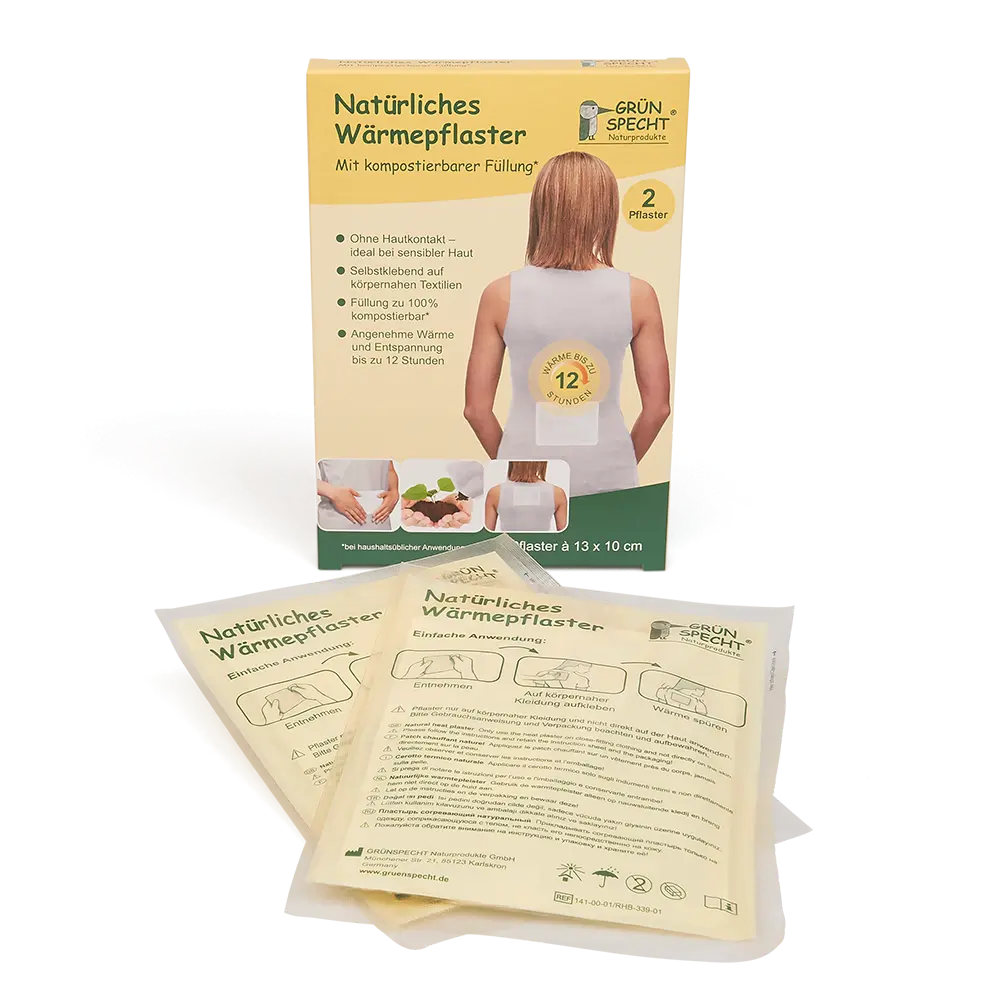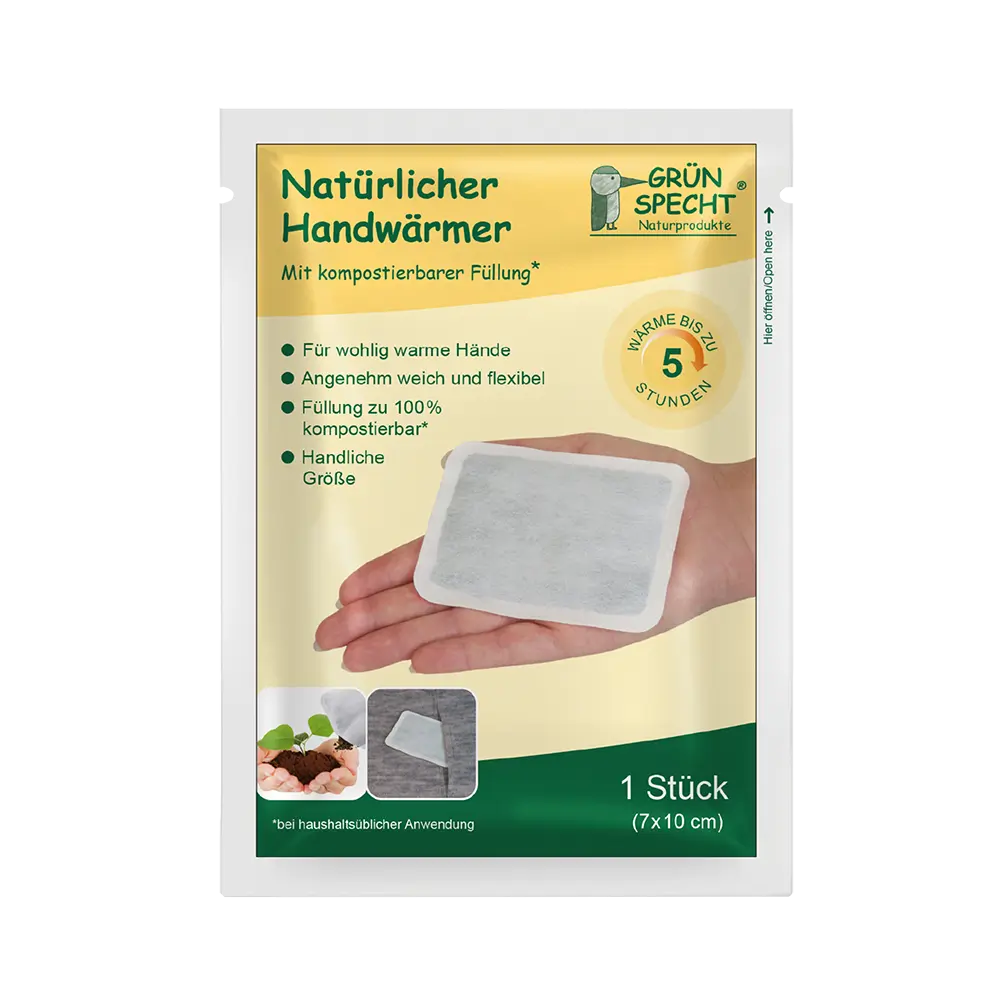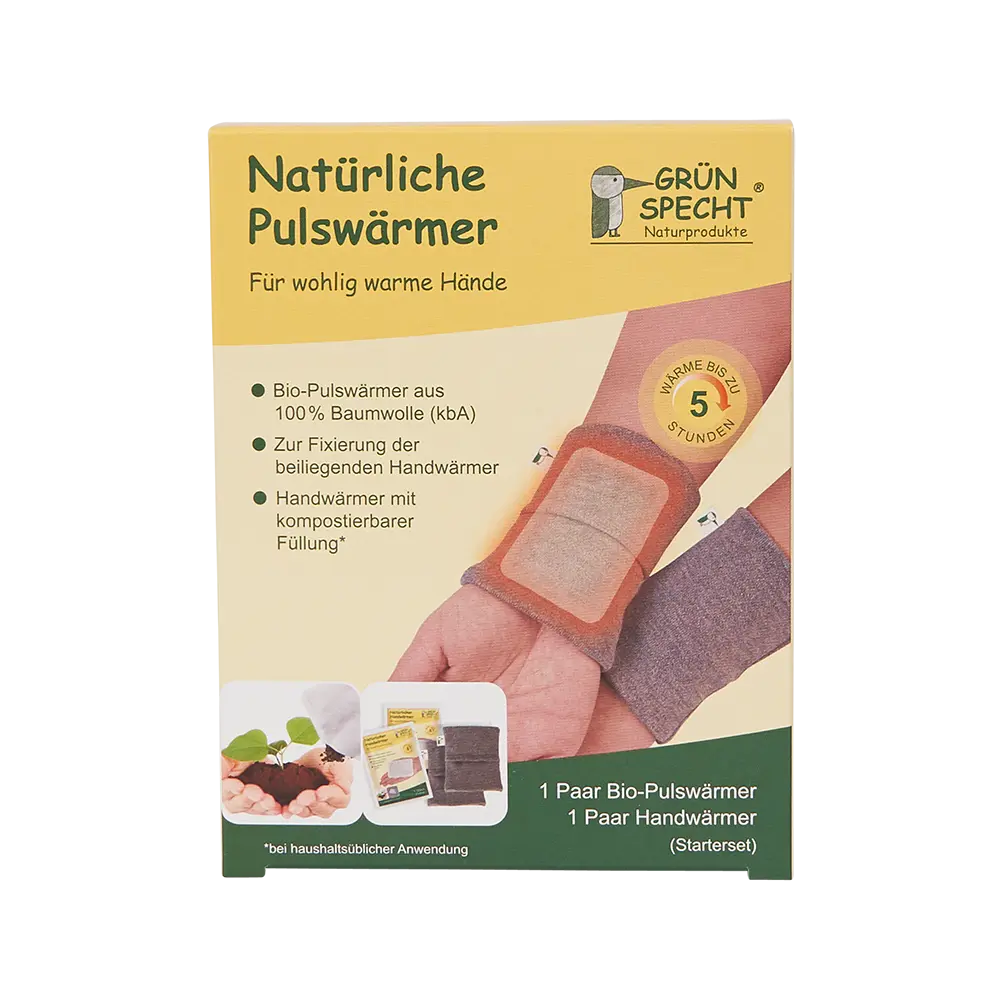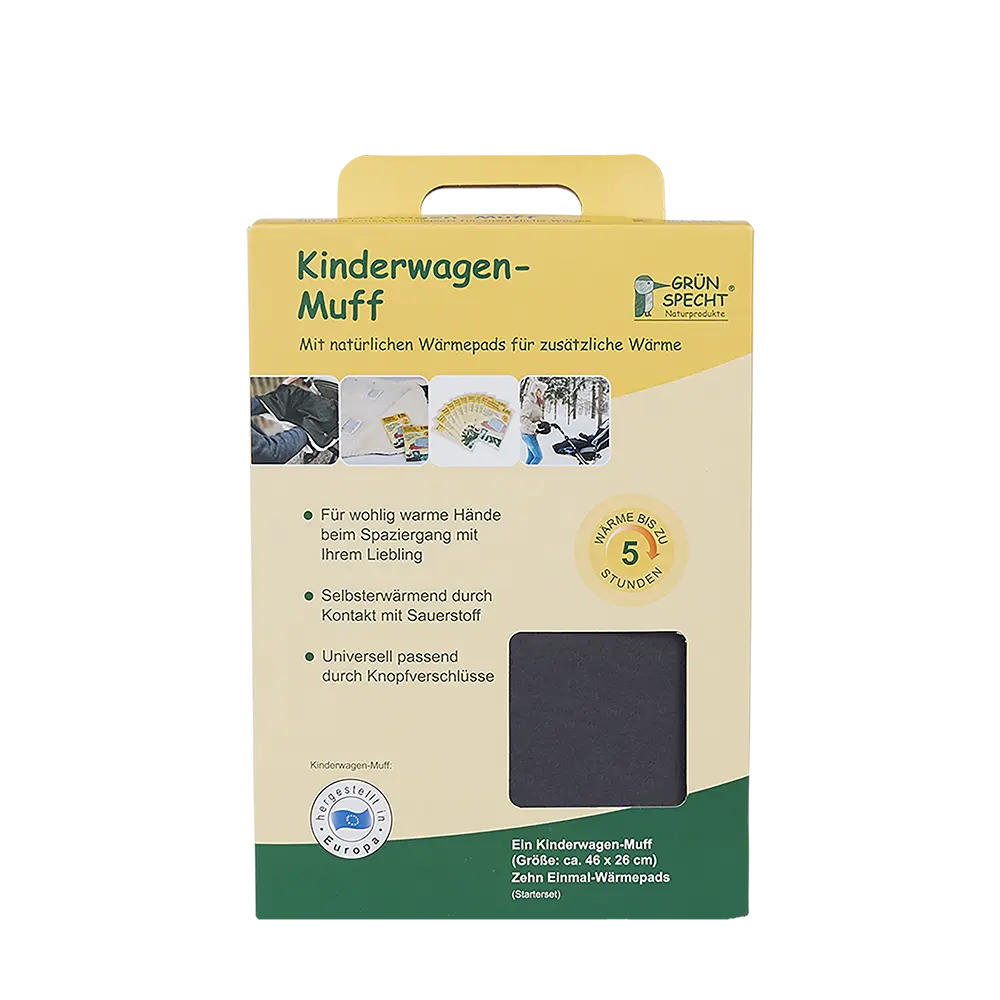Natural Body Warmers
With compostable filling*
Body warmers for single use, such as heat patches, provide a practical and discreet source of heat when on the move. They are fixed to the body with an adhesive layer or can be carried in a jacket pocket as hand warmers, activate themselves through contact with oxygen and, depending on the product, provide soothing warmth for 5 to 12 hours. The mode of operation is based on a chemical reaction, namely that of rusting. After opening the package, oxygen gets to the contained iron powder, which starts to oxidize and develops soothing heat after about 15 minutes.
However, all disposable body warmers have one thing in common: they are single-use products that have to be disposed of after use!
We at GRÜNSPECHT Naturprodukte have made it our goal to offer natural problem solvers and have therefore found a natural alternative to reduce the waste generated by disposable body warmers.
Therefore, discover our natural body warmers with compostable filling*:
Environmentally friendly disposal

After use, our natural body warmers can be easily disposed of in an environmentally friendly manner. Once the product has cooled down completely, it is kneaded by hand so that the contents split into small pieces. The warmer is then carefully opened at the narrow edge with scissors and the contents emptied into the organic waste or compost*.
Only the outer casing of the products, the peel-off paper and the oxygen-tight packaging are to be disposed of separately by type in the household waste. This saves approx. 90% of the product weight in waste (average value based on the weight of a body warmer after use).
*For household use. We recommend applying the contents of one heat patch, one pair of foot warmers or two hand warmers to 10 liters of compost or organic waste to ensure adequate dilution. When used in household compost, the amount of thermal patches disposed of over a longer period of time should be a maximum of four thermal patches, 6 pairs of foot warmers or 9 hand warmers per month (based on study by Fraunhofer Institute Molecular Biology and Applied Ecology, 2019).







